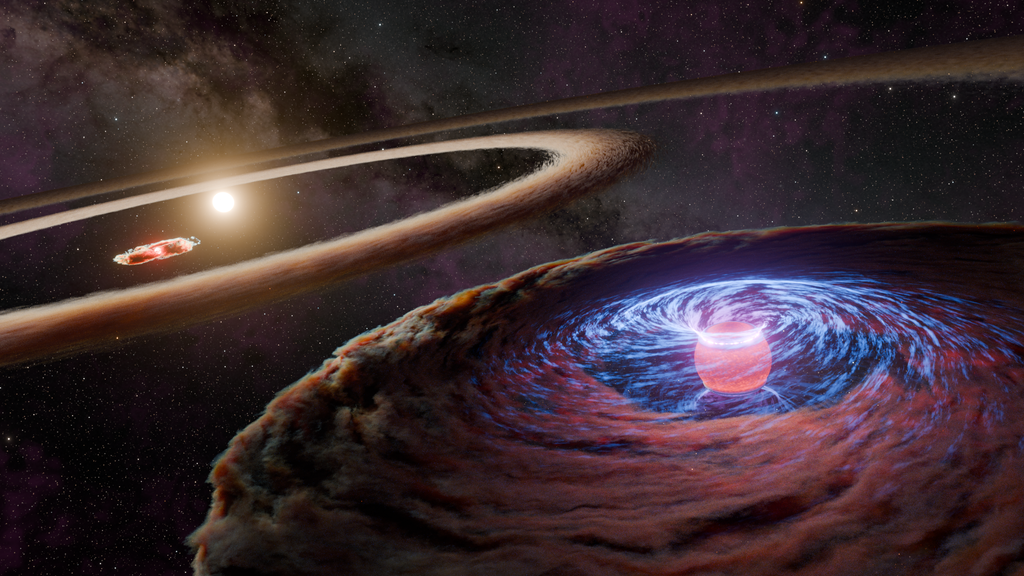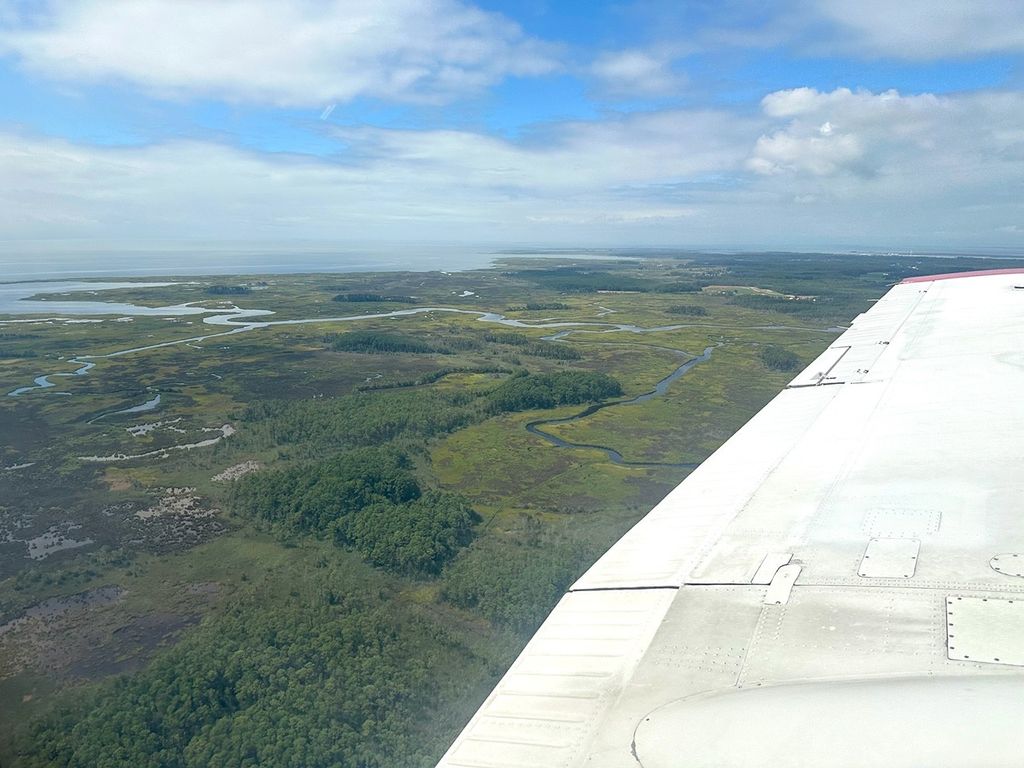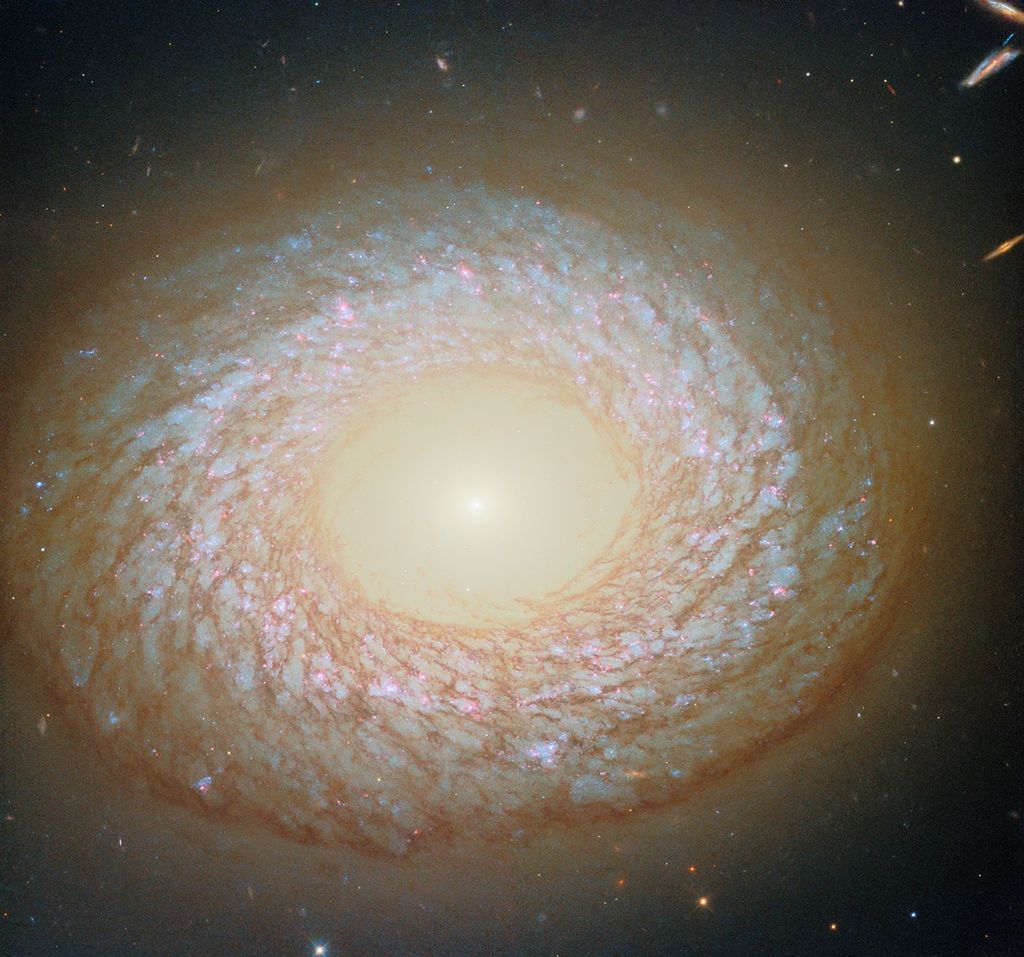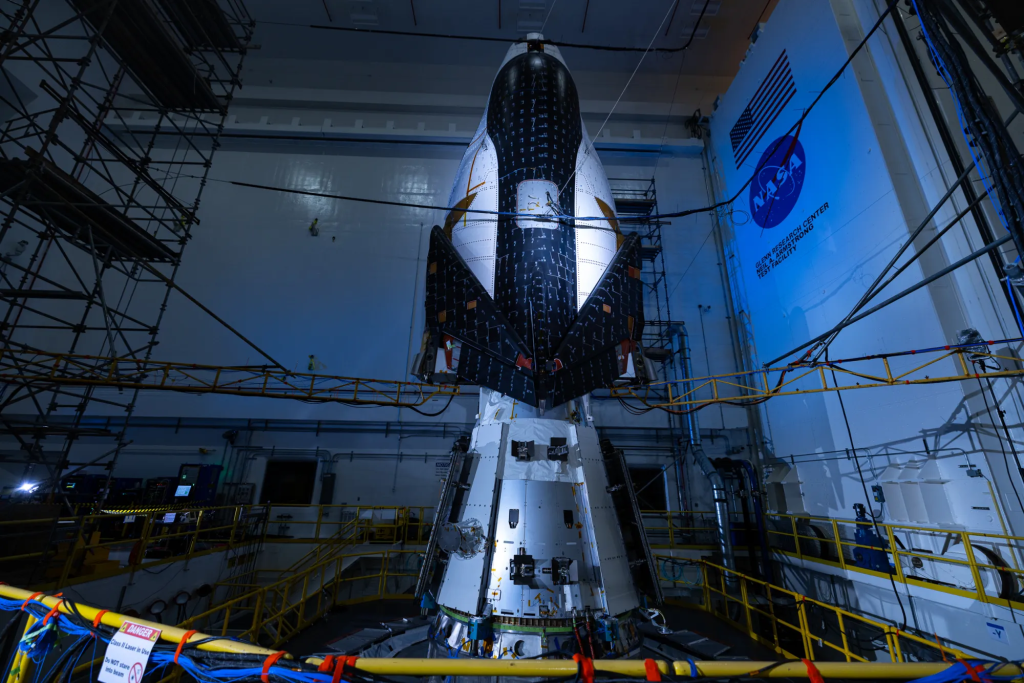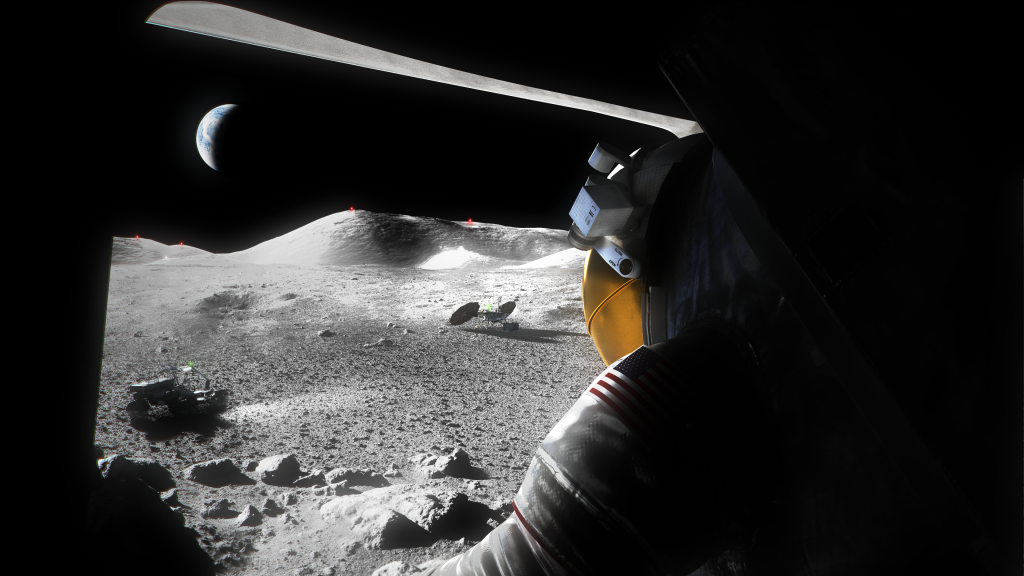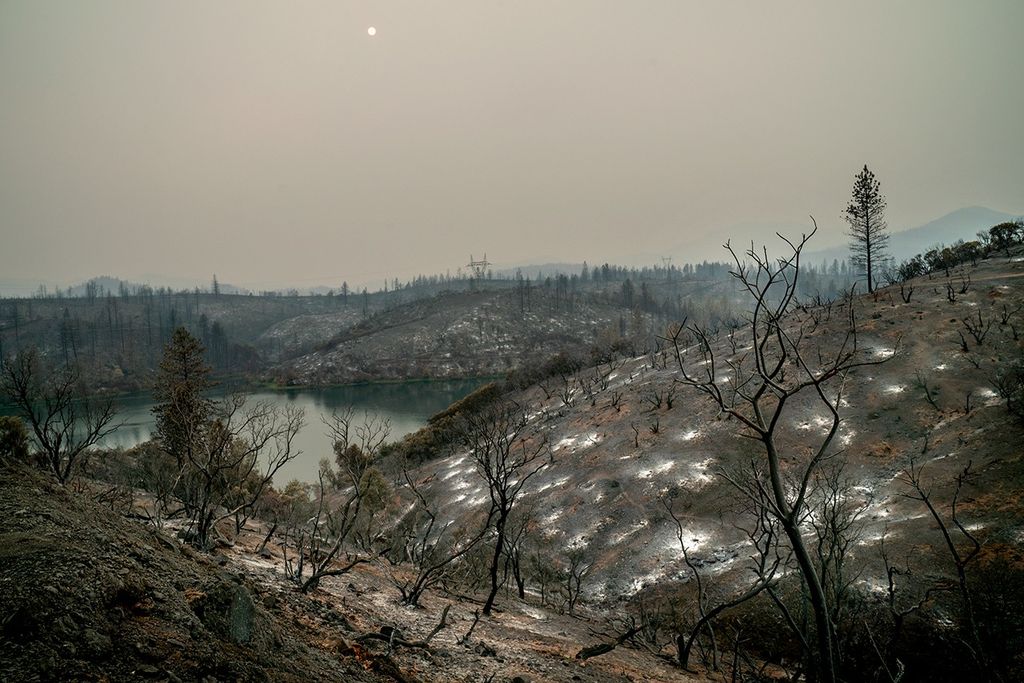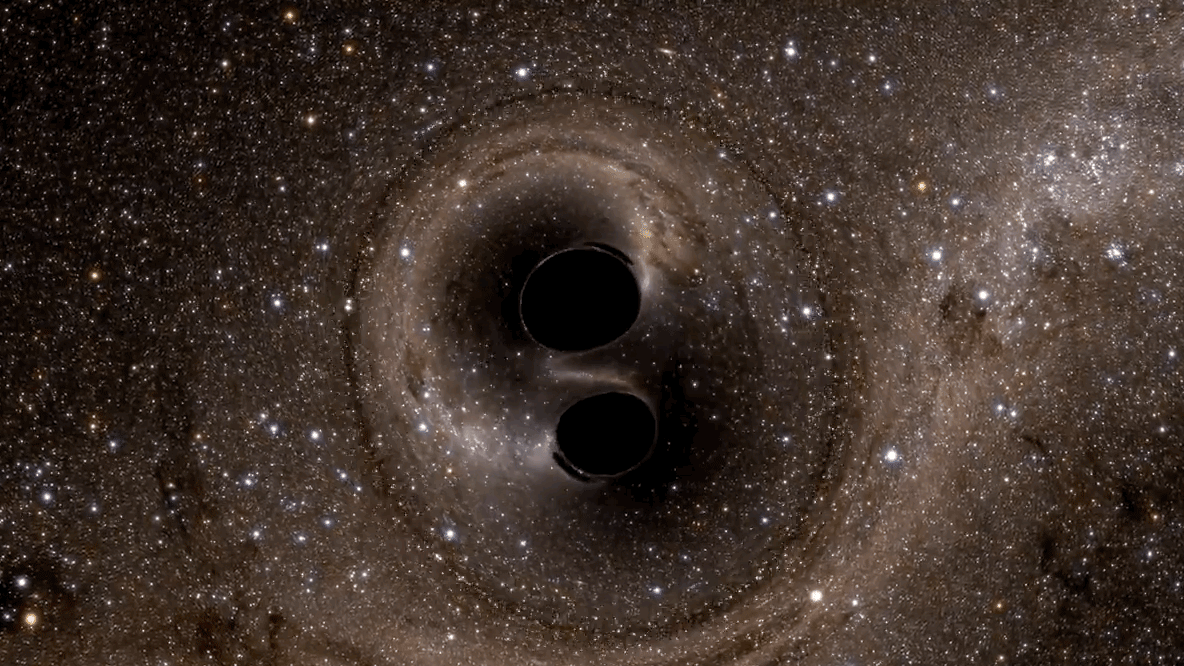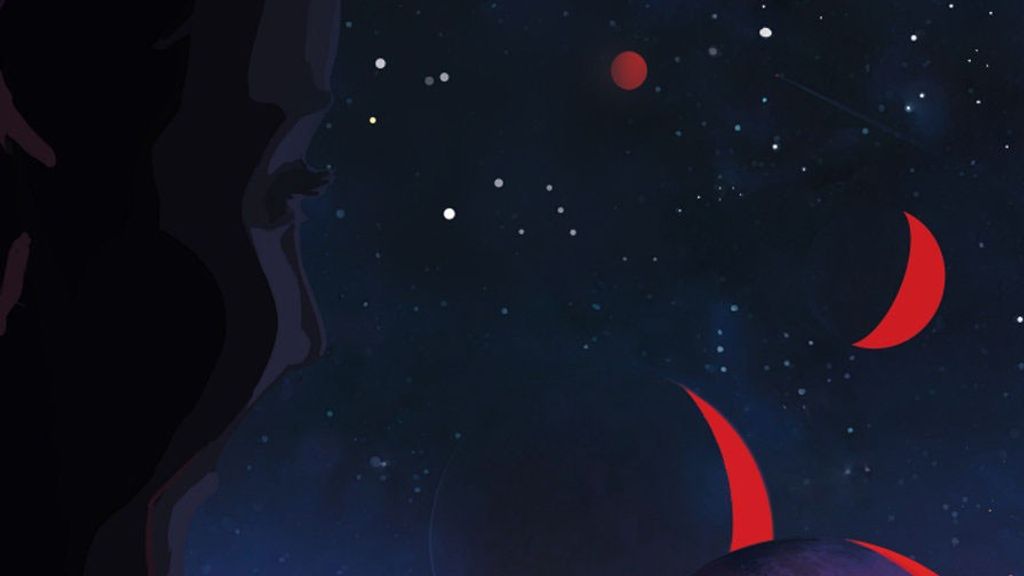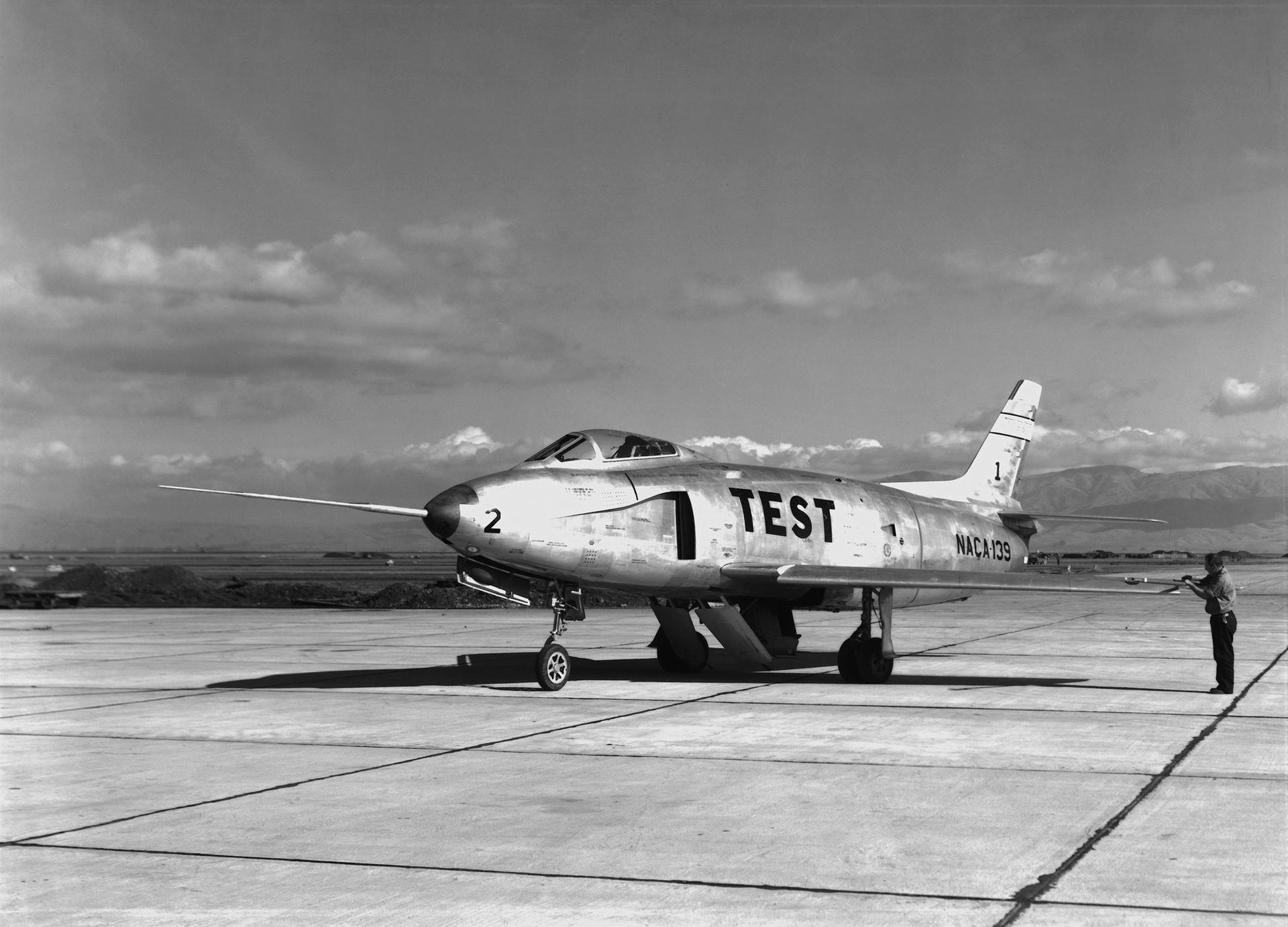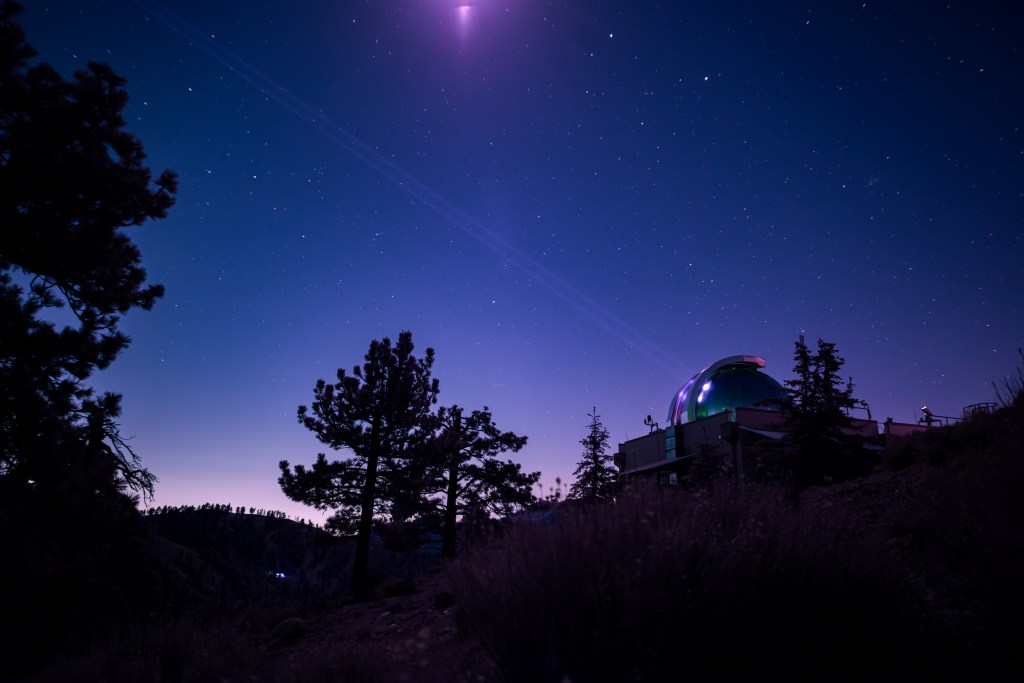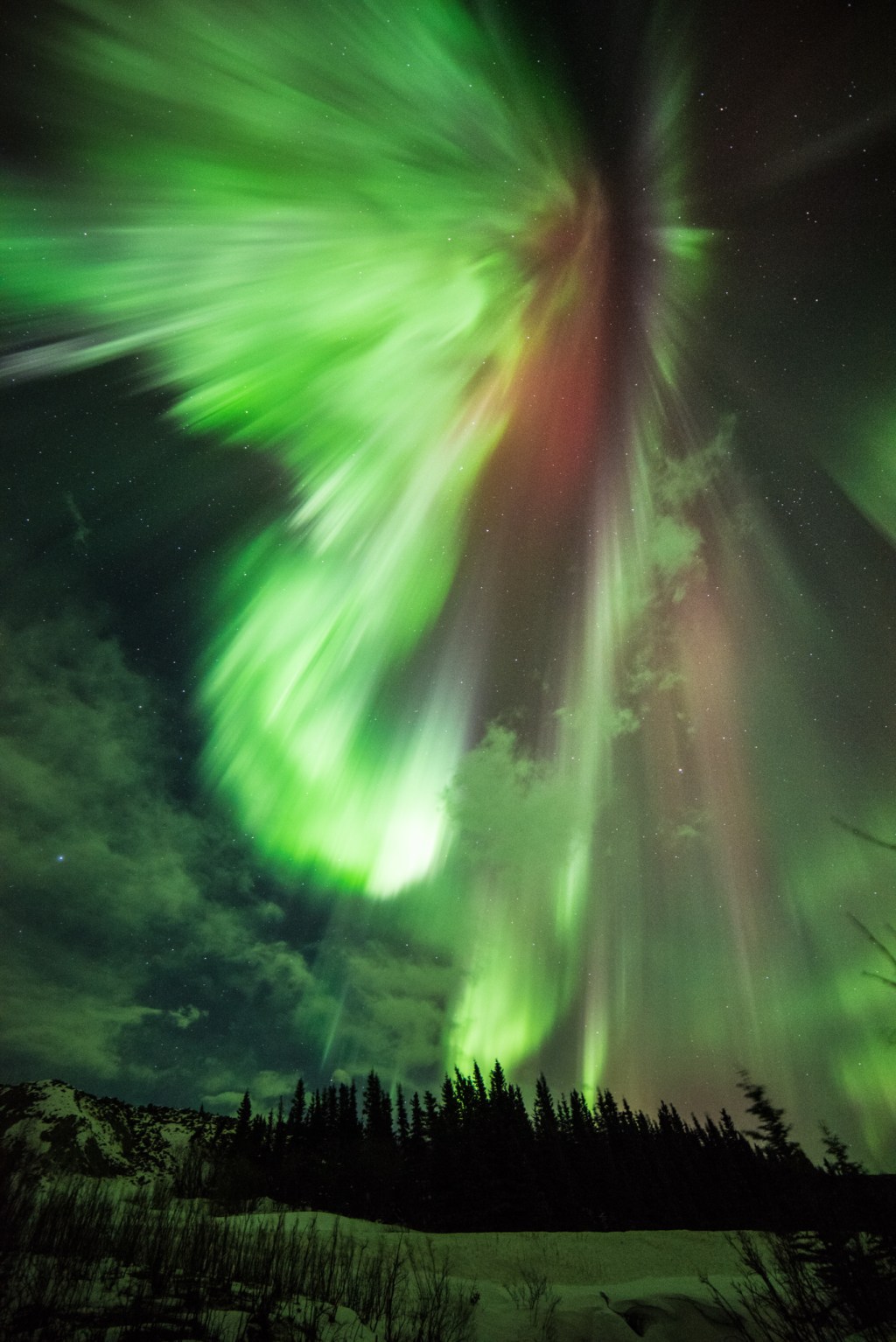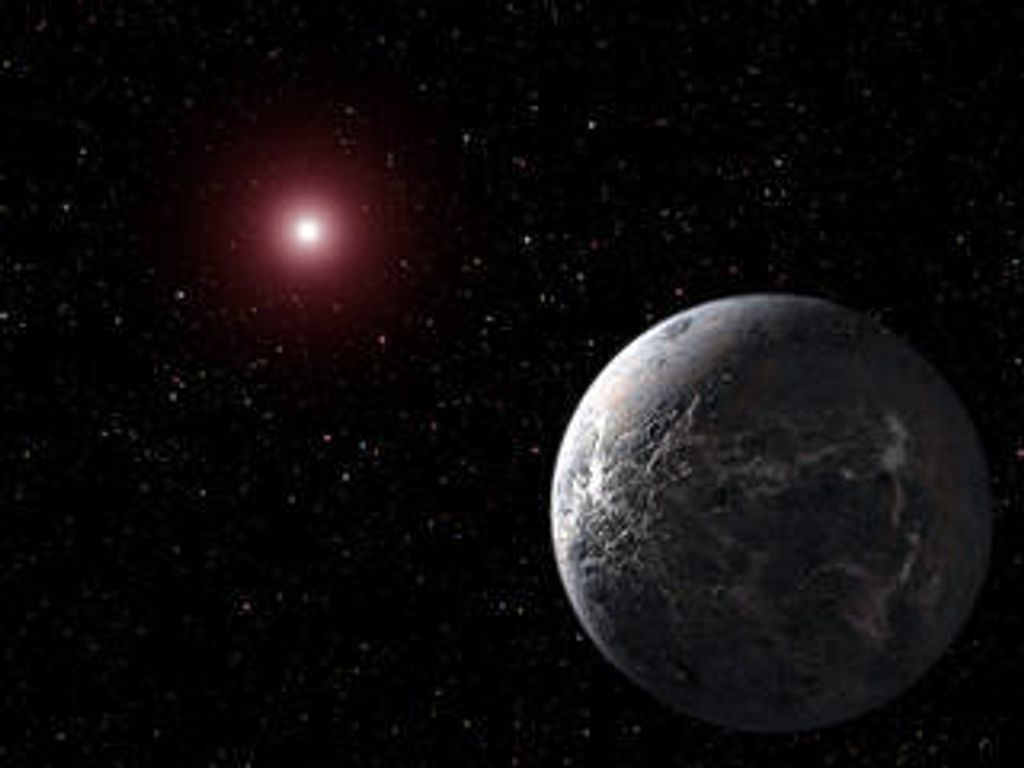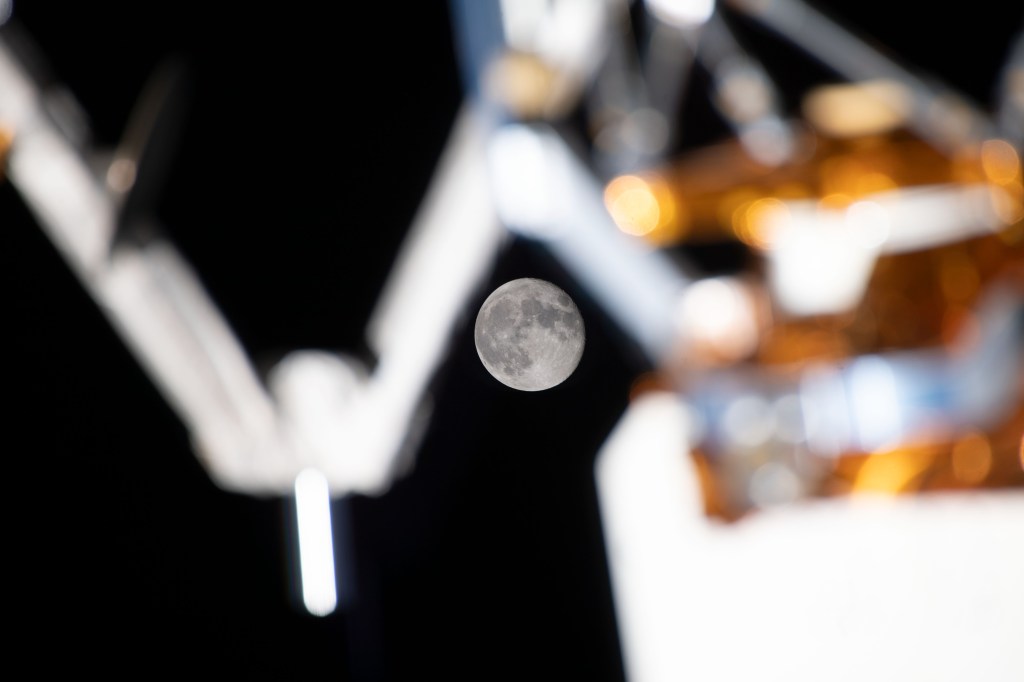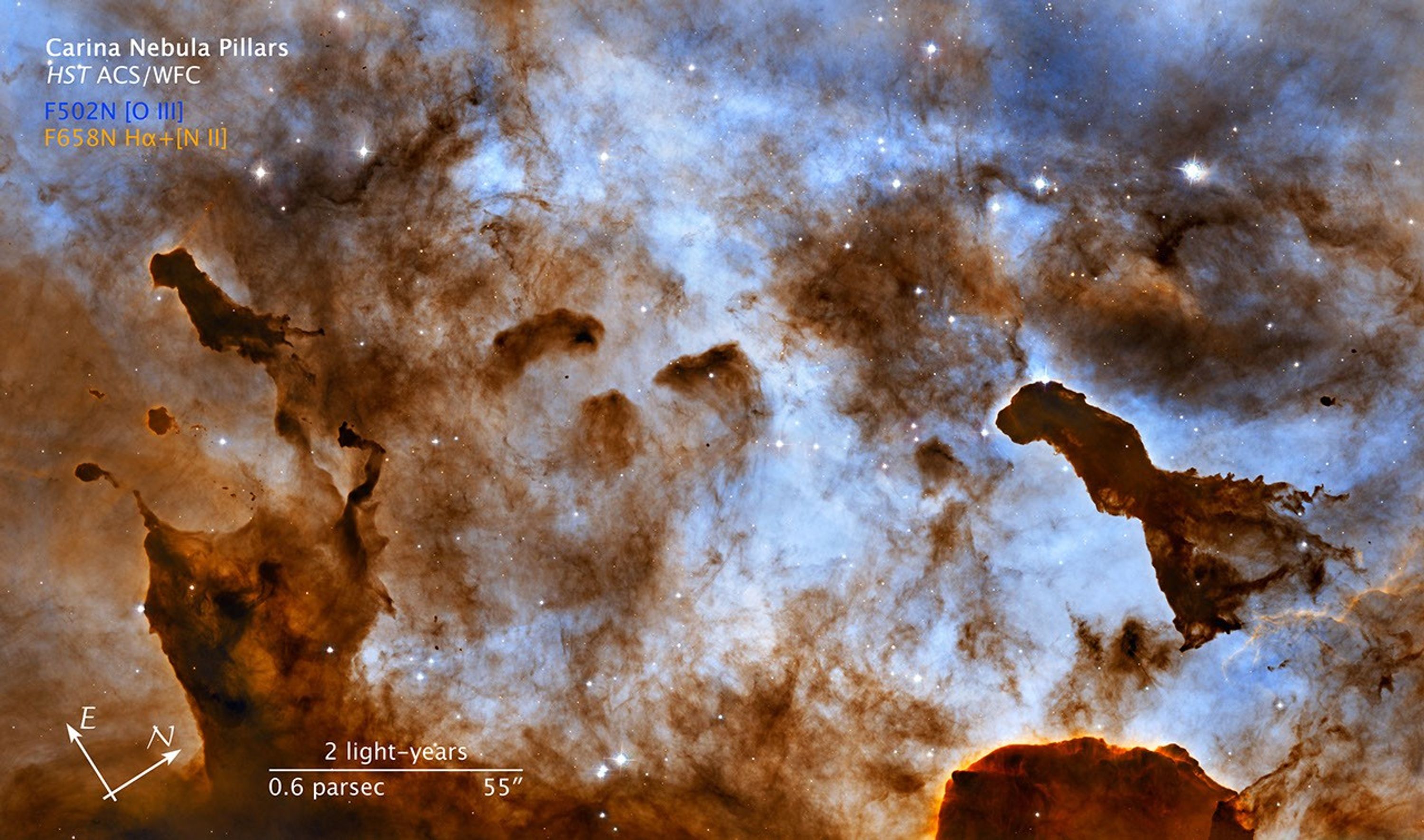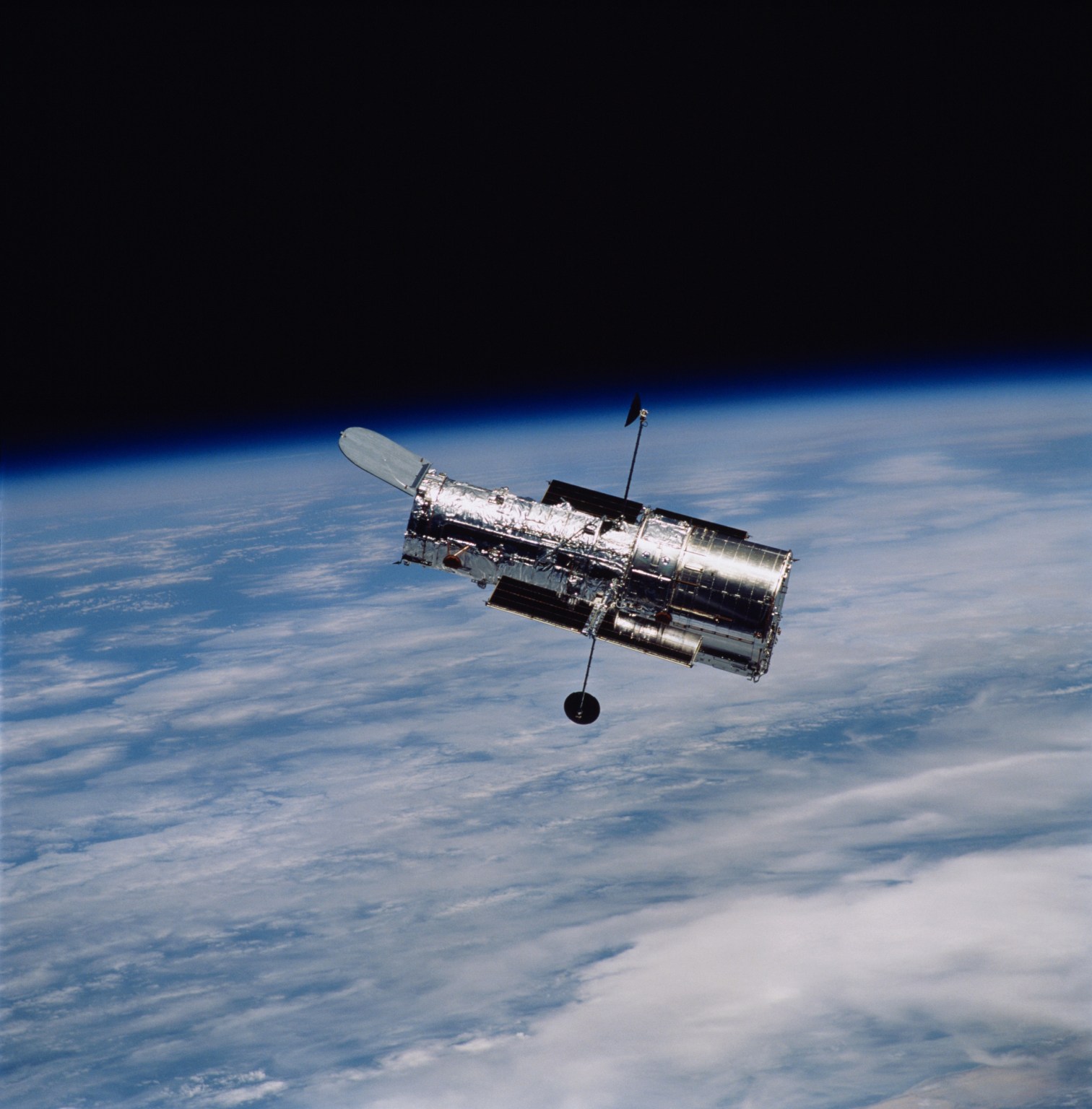1 min read
Cosmic Ice Sculptures: Dust Pillars in the Carina Nebula

Enjoying a frozen treat on a hot summer day can leave a sticky mess as it melts in the Sun and deforms. In the cold vacuum of space, there is no edible ice cream, but there is radiation from massive stars that is carving away at cold molecular clouds, creating bizarre, fantasy-like structures.
These one-light-year-tall pillars of cold hydrogen and dust, imaged by the Hubble Space Telescope, are located in the Carina Nebula. Violent stellar winds and powerful radiation from massive stars are sculpting the surrounding nebula. Inside the dense structures, new stars may be born.
This image of dust pillars in the Carina Nebula is a composite of 2005 observations taken of the region in hydrogen light (light emitted by hydrogen atoms) along with 2010 observations taken in oxygen light (light emitted by oxygen atoms), both times with Hubble's Advanced Camera for Surveys. The immense Carina Nebula is an estimated 7,500 light-years away in the southern constellation Carina.
About the Object
- R.A. PositionR.A. PositionRight ascension – analogous to longitude – is one component of an object's position.10h 43m 59.99s
- Dec. PositionDec. PositionDeclination – analogous to latitude – is one component of an object's position.-59° 35' 0.0"
- ConstellationConstellationOne of 88 recognized regions of the celestial sphere in which the object appears.Carina
- DistanceDistanceThe physical distance from Earth to the astronomical object. Distances within our solar system are usually measured in Astronomical Units (AU). Distances between stars are usually measured in light-years. Interstellar distances can also be measured in parsecs.7,500 light-years (2,300 parsecs)
- DimensionsDimensionsThe physical size of the object or the apparent angle it subtends on the sky.This image is 5 arcminutes (11.4 light-years or 3.5 parsecs) wide.
About the Data
- Data DescriptionData DescriptionProposal: A description of the observations, their scientific justification, and the links to the data available in the science archive.
Science Team: The astronomers who planned the observations and analyzed the data. "PI" refers to the Principal Investigator.This image was created from HST data from proposals 12050: M. Livio, K. Noll, M. Mutchler, Z. Levay, L. Frattare, W. Januszewski, C. Christian, and T. Borders (Hubble 20th Anniversary Team, STScI); and 10241: N. Smith (University of California, Berkeley), J. Bally (University of Colorado, Boulder), N. Walborn (STScI), and J. Morse (NASA/GSFC). - InstrumentInstrumentThe science instrument used to produce the data.HST>ACS/WFC
- Exposure DatesExposure DatesThe date(s) that the telescope made its observations and the total exposure time.July 17, 2005, and February 1-2, 2010
- FiltersFiltersThe camera filters that were used in the science observations.F658N (H-alpha+[N II]) and F502N ([O III])
- Object NameObject NameA name or catalog number that astronomers use to identify an astronomical object.Carina Nebula Pillar
- Object DescriptionObject DescriptionThe type of astronomical object.Carina Nebula Star-Forming Pillars
- Release DateSeptember 16, 2010
- Science ReleaseCosmic Ice Sculptures: Dust Pillars in the Carina Nebula
- CreditNASA, ESA, and the Hubble Heritage Project (STScI/AURA); Acknowledgment: M. Livio (STScI) and N. Smith (University of California, Berkeley)

These images are composites of separate exposures made by the ACS instrument on the Hubble Space Telescope (HST). Each filter was used to sample a narrow wavelength range. The composite colors result from assigning different hues (colors) to each monochromatic (grayscale) image associated with an individual filter. In this case, the assigned colors are: Yellow/gold: F658N (H-alpha+[N II]) Cyan: F502N ([O III])
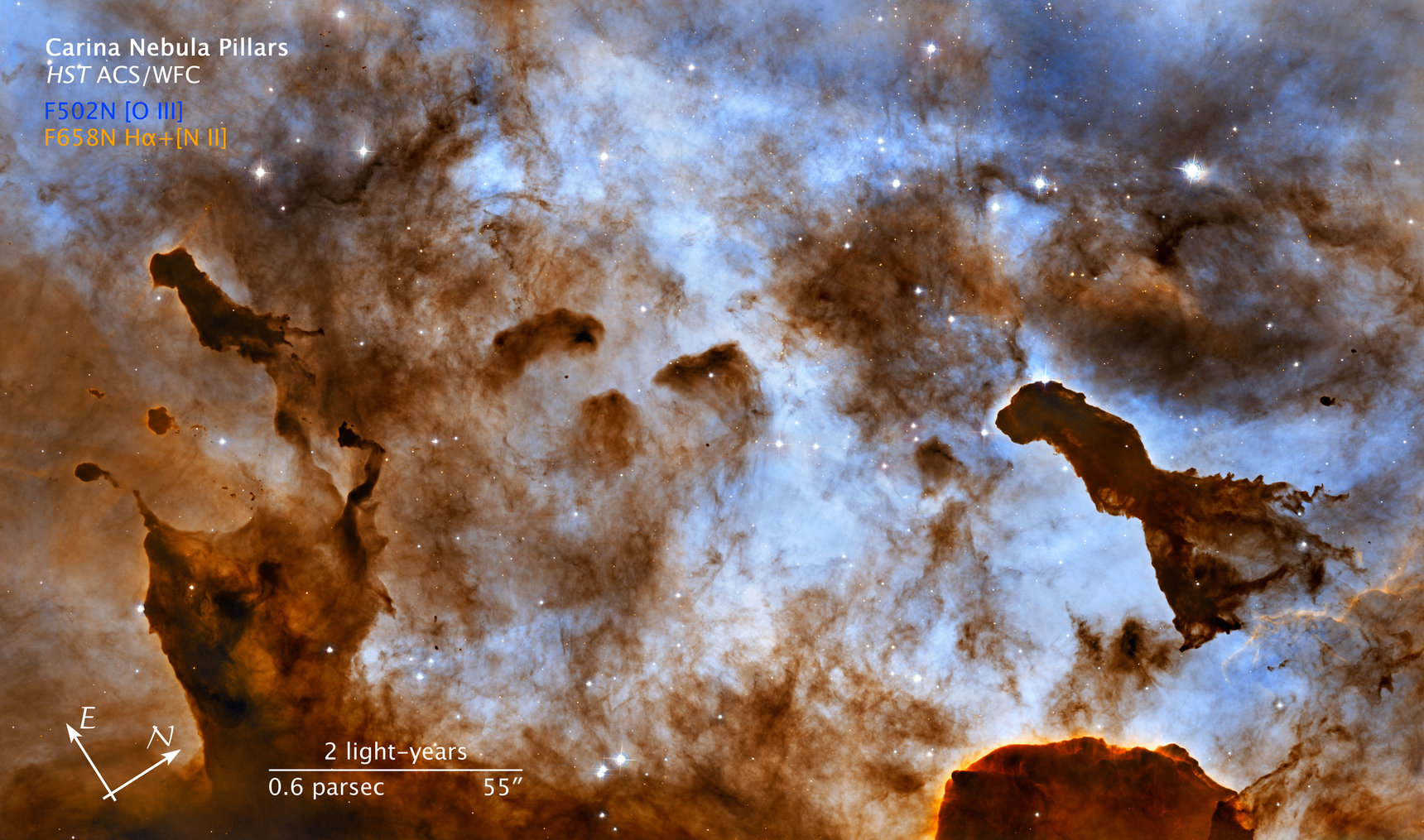
Related Images & Videos
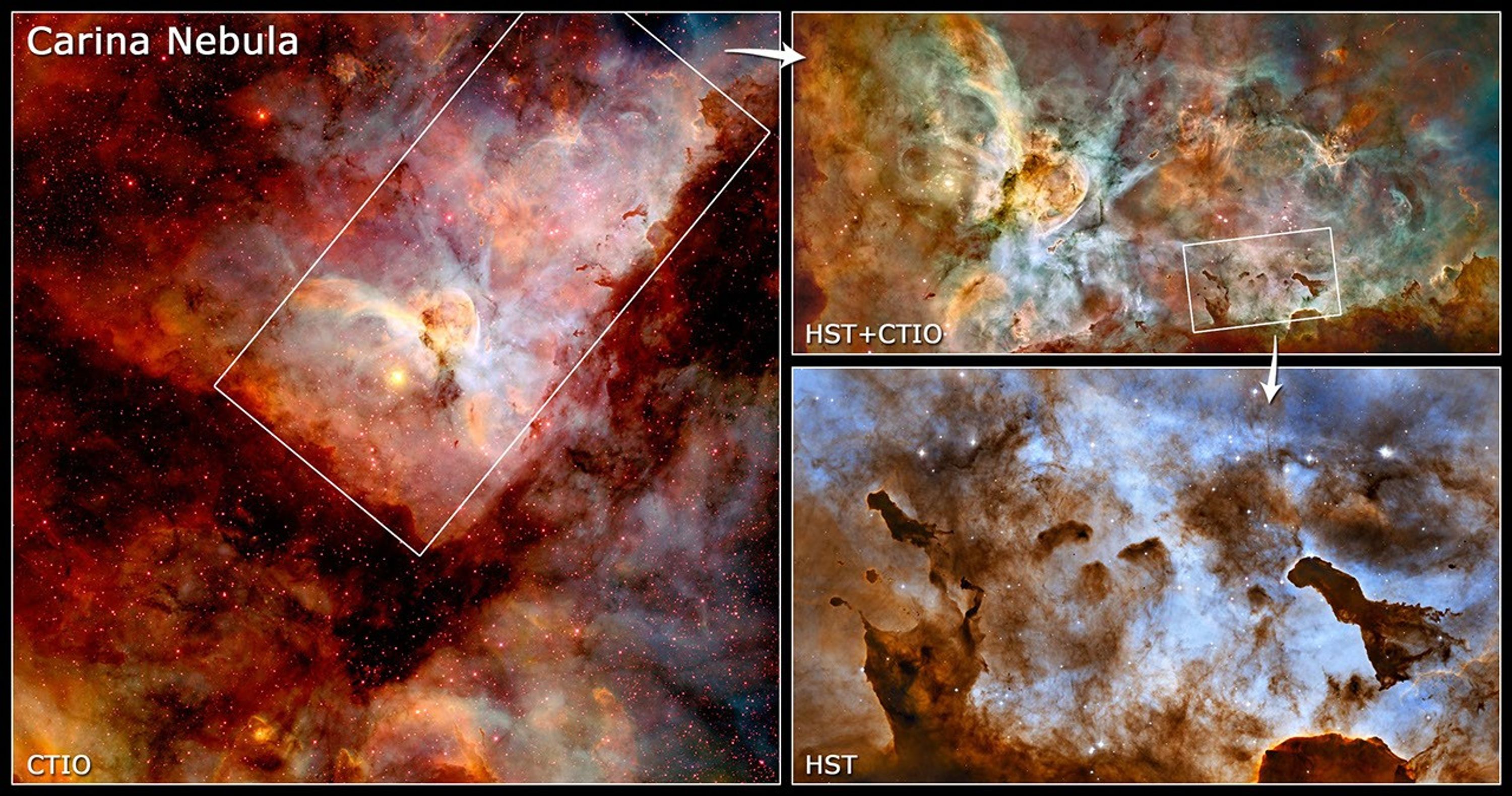
Carina Nebula Finder Image
[LEFT] This is the Carina Nebula as imaged by ground-based telescopes at the Cerro Tololo Inter-american Observatory (CTIO) in La Serena, Chile. Narrow-band filters which allow emission from oxygen, hydrogen, and oxygen were used to create this multi-colored image. The white box...
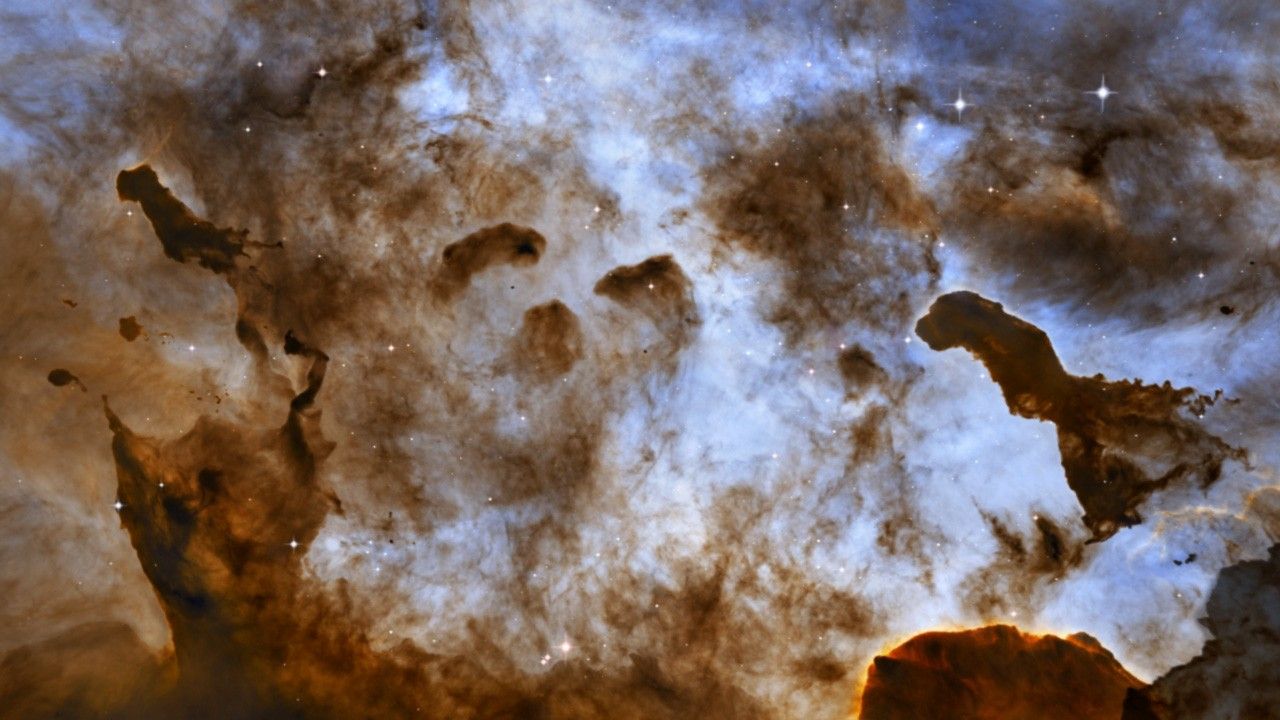
A Flight Into the Dark Pillars of Carina
This scientific visualization creates a three-dimensional virtual tour of several dark pillars of cool gas in the Carina Nebula. The stars and nebula layers from Hubble's two-dimensional image have been separated using both scientific knowledge and artistic license to create the...
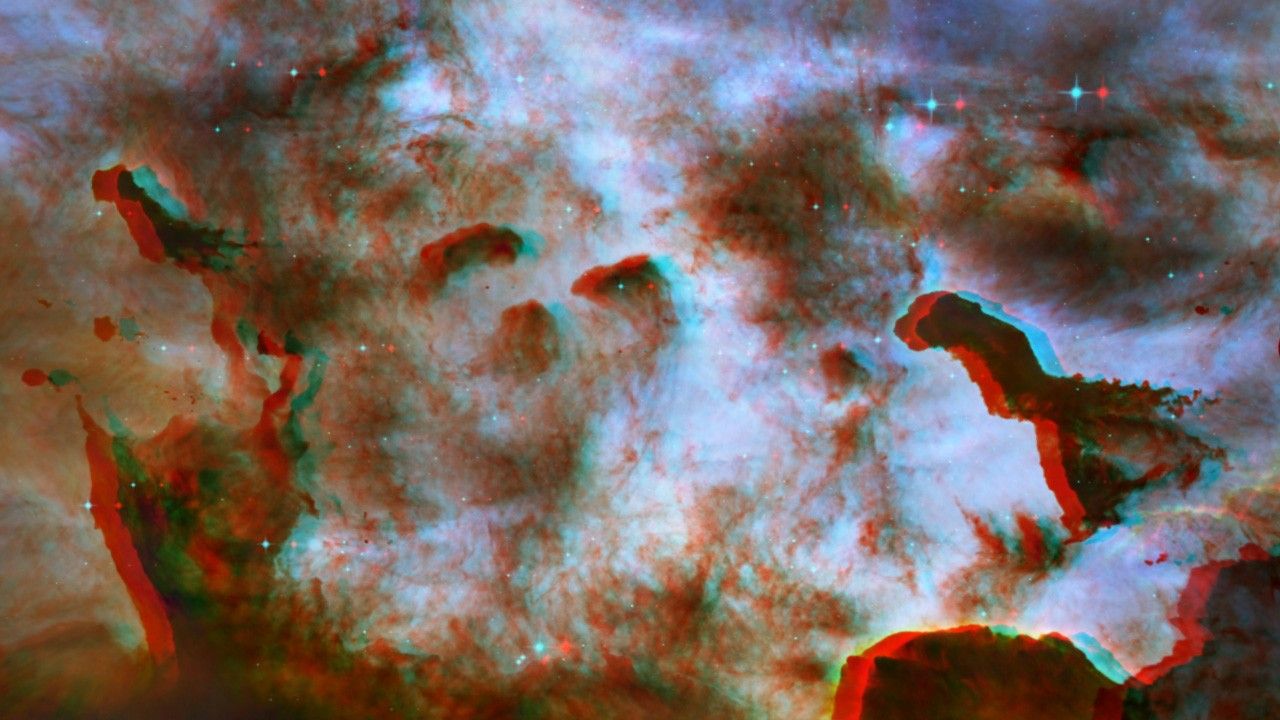
A Stereo 3-D Flight Into the Dark Pillars of Carina
This scientific visualization creates a three-dimensional virtual tour of several dark pillars of cool gas in the Carina Nebula. The stars and nebula layers from Hubble's two-dimensional image have been separated using both scientific knowledge and artistic license to create the...
Share
Details
Claire Andreoli
NASA’s Goddard Space Flight Center
Greenbelt, Maryland
claire.andreoli@nasa.gov

